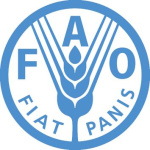- Industry: Agriculture
- Number of terms: 87409
- Number of blossaries: 0
- Company Profile:
Established in October 1945 with the objective of eliminating hunger and improving nutrition and standards of living by increasing agricultural productivity, FAO coordinates the efforts of governments and technical agencies in programs for developing agriculture, forestry, fisheries, and land and ...
A general term for all the things which happen in a biotechnological process after the biology, be it fermentation of a micro-organism or growth of a plant. It is particularly relevant to fermentation processes, which produce a large quantity of a dilute mixture of substances, products and micro-organisms. These must be separated, and the product must be concentrated and purified, and converted into a form which is useful.
Industry:Biotechnology
A general term used to describe the culture of cells, tissues or organs in a nutrient medium under sterile conditions.
Industry:Biotechnology
A generic descriptor for various plant diseases, especially those caused by a group of parasitic fungi of the phylum <i>Basidiomycota</i>, that attack the leaves and stems of crops.
Industry:Biotechnology
A generic term for any procedure that transports DNA into a recipient cell.
Industry:Biotechnology
A genetic condition in which a chromosome or a segment of a chromosome is over-represented in the genotype. Opposite: hypoploid.
Industry:Biotechnology
A genetic condition in which a chromosome or segment of a chromosome is underrepresented in the genotype. Opposite: hyperploid.
Industry:Biotechnology
A genetic disease caused by an allele at a locus on the X-chromosome. In X-linked recessive conditions, a normal female "carrier" passes on the allele on her X chromosome to an affected son.
Industry:Biotechnology
A genetic extrachromosomal element (e.g., the fertility factor (F) in <i>Escherichia coli</i>) which replicates within a cell independently of the chromosome and is able to integrate into the host chromosome. The step of integration may be governed by a variety of factors and so the term episome has lost favour and been superseded by the wider term <i>plasmid</i>. Plasmids and F factors are episomes.
Industry:Biotechnology
A genetic technique used to replace one copy of a gene, or other DNA sequence within a genome, with an altered copy of that sequence. The DNA is first cloned and then altered in some way, e.g., a transposon is inserted into a gene. The mutated gene copy can be used to replace the original gene by recombination <i>in vivo</i>. The incorporation of the mutated gene is usually selected, for example, by virtue of its containing a transposon-encoded antibiotic resistance.
Industry:Biotechnology
A genus of bacteria that includes several plant pathogenic species, causing tumour-like symptoms.
Industry:Biotechnology
